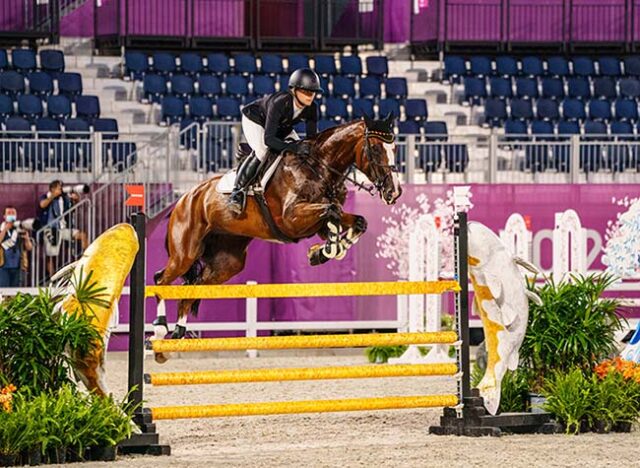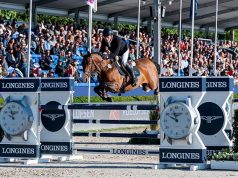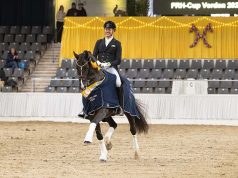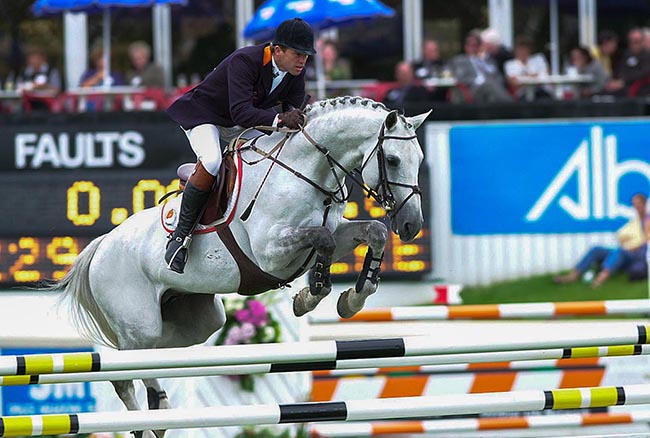By Kim Lundin
Photography: Kim Lundin
Eventing was history in the making. A Trakehner ballerina in the dressage arena as TSF Dalera BB had all the right moves to take Olympic gold. A showjumping Explosion, and the unbeatable, überfast flying Swedes. Ultimate, format changes proved both popular and controversial!
Great Britain took the lead in eventing and held it in a firm grasp all the way to the medal podium’s top spot taking a much-coveted Olympic team gold, their first since Munich 1972. Germany took individual gold in stunning style, as Julia Krajewski and the French-bred mare Amande de B’Neville claimed their spot in history as the first woman to take the title. While a closer look at the breeding behind the best eventers show jumping sires in combination with a lot of blood.
Challenging format changes
There were 15 nations putting eventing teams on the start line and a total of 29 nations presenting individual combinations, 61 in total, and 44 made it to the finish line. The goal of having more flags was undoubtedly reached with teams from both China and Thailand participating for the first time. The new format’s key element limits each team to three riders, with a reserve who can be put into play in all the phases with a penalty being added to the team score. The possibility to continue after the cross-country – even if one of the three combinations is eliminated in this phase is a new concept, but it will never have an impact on the best teams. It was the brand-new Olympic dressage test that proved to be a game changer, taking just under four minutes to complete. With very few movements it proved to be quite unforgiving, and the results after two days of dressage was surprising.
While Great Britain took the team lead following their pathfinder Oliver Townend on Ballagmoor Class (ISH by Courage II x Unknown damsire) after the first day, Germany took the individual leader after day two thanks to reigning individual double champion Michael Jung producing a top-score with fischerChipmunk FRH (Hann: Contendro I - Havanna x Heraldik xx). Ahead of the cross-country, New Zealand was third and Japan fourth, but only 20 penalties separated Great Britain and Switzerland in 10th place.
Good dressage results across the board were not so much a product of good and fluent gaits among the participants, but rather very well conducted, schooled, and quite a few very supple horses. Eventing riders of today have all managed to transition into a world where the dressage test sets the field of play in a very specific manner. You do not win with merely good dressage quality, but you are lost in the competition without it. Then again, the Tokyo 2020 eventing was never destined to be a dressage competition, it would all be a showdown at the Sea Forest cross-country course. To compete in the heat and humidity that is a signature of the Tokyo Bay area in July and August, a lot of blood and good jumping skills would prove to be vital.
Cross-country with a Tokyo skyline
To describe the Sea Forest venue as beautiful is an understatement. The path to the course on top of a hill on an island – originally a former dumping ground – winds up in lush green forest where the cicadas make an endlessly soothing noise. At the summit, a cross-country landscape opens with water fences, drops, and narrow angles spread out around the 4,500-meter course. “The ground is fantastic, and the fences are beautiful, like at every Olympic Games. You cannot question the presentation. It’s a proper challenge, and I don’t mean just with the height of the fences. The layout of the course, the flow – it’s going to be a challenge to get the time,” said Andrew Hoy. Of course, the decorated Australian was right, and he took the path to an individual medal and a team silver.
It should be noted that course designer Derek di Grazia’s track had an optimum time of 7:45, with nine riders coming home inside, and seven being double clear.
As always, the top teams fielded strong rides making the course look extremely manageable, despite the heat and humidity. Oliver Townend (GBR) and 14-year-old Irish Sport Horse stallion Ballaghmor Class (Courage II, bred by Noel Hickey) started as number two, and showed how well the course could flow. His fellow team-mates maintained the pace and provided textbook rounds of exemplary riding. The British gold-medal winning team horses all presented solid jumping pedigrees. Silver medallist Toledo de Kerser (2007/SF/g Diamant de Semilly x Papillon Rouge) was bred by Kerstin Drevet and ridden by Tom McEwen – and showed excellent form not only in cross-country but twice posting clear showjumping rounds.
The third British team member, Laura Collett riding London 52 (2009/Holst/g Landos x Quinar, bred by Ocke Riewerts) sailed through the cross-country, but a few rails in the individual final relegated her to ninth place. However, a healthy lead of 17.9 penalties gave Britain the advantage of four rails, and retained their top spot on the podium.
Individually, Julia Krajewski and Amande de B’Neville (2010/SF/m Oscar des Fontaines x Elan de La Cour), bred by M. Jean-Babtiste Thiebot, picked up a tiny time-fault and took the overnight lead. She was the pathfinder for the German team and her mare has a very solid jumping pedigree with high-level performance sires on both sides. Her sire, the 19-year-old Oscar des Fontaine (Lando x Mr. Blue) continues to compete with Sara Vingralkova (CZE), with their latest appearance being a CSI2* in London in August 2021. Amande’s damline is from the French studfarm B’Neville and she has siblings from three generations who have competed at a high level in showjumping... To read the complete article you need to be a subscriber
CLICK HERE TO SUBSCRIBE TO BREEDING NEWS
SUBSCRIBERS CAN READ THE COMPLETE ARTICLE BY LOGGING IN AND RETURNING TO THIS PAGE




